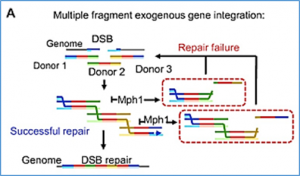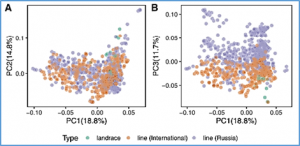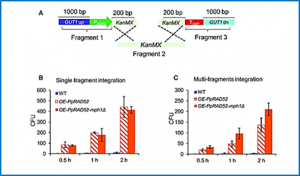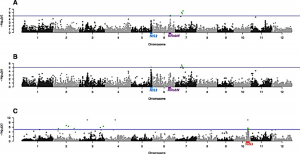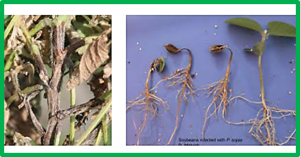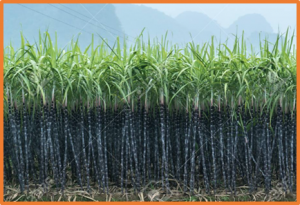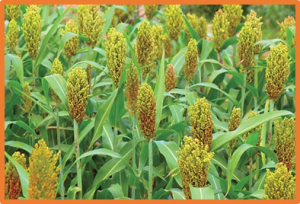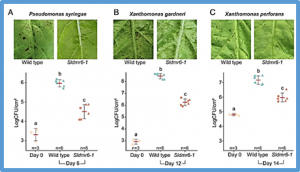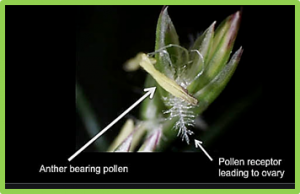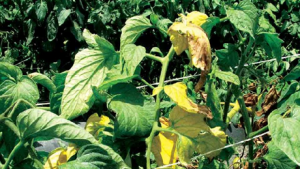The industrial yeast Pichia pastoris has been harnessed extensively for production of proteins, and it is attracting attention as a chassis cell factory for production of chemicals. However, the lack of synthetic biology tools makes it challenging in rewiring P. pastoris metabolism. We here extensively engineered the recombination machinery by establishing a CRISPR-Cas9 based genome editing platform
We searched for the genetic basis of fatty acid content variation by genotyping 601 inbred sunflower lines and assessing their lipid and fatty acid composition. Our genome-wide association analysis based on the genotypes for 15,483 SNPs and the concentrations of 23 fatty acids, including minor fatty acids, revealed significant genetic associations for eleven of them.
The industrial yeast Pichia pastoris has been harnessed extensively for production of proteins, and it is attracting attention as a chassis cell factory for production of chemicals. However, the lack of synthetic biology tools makes it challenging in rewiring P. pastoris metabolism. We here extensively engineered the recombination machinery by establishing a CRISPR-Cas9 based genome editing platform,
Nitrogen fertilization is known to increase disease susceptibility, a phenomenon called Nitrogen-Induced Susceptibility (NIS). In rice, this phenomenon has been observed in infections with the blast fungus Magnaporthe oryzae. A previous classical genetic study revealed a locus (NIS1) that enhances susceptibility to rice blast under high nitrogen fertilization. In order to further address the underlying genetics of plasticity in susceptibility to rice blast after fertilization, we analyzed NIS under greenhouse-controlled conditions in a panel of 139 temperate japonica rice strains.
Phytophthora sansomeana is a recently recognized species that contributes to root rot in soybean. Previous studies indicated that P. sansomeana is widely distributed among soybean growing regions and has a much wider host range than P. sojae, a well-known pathogen of soybean. Unlike P. sojae, no known disease resistance genes have been documented that can effectively control P. sansomeana.
In the recent decade, genetic progress has been slow in sugarcane. One reason might be that non-additive genetic effects contribute substantially to complex traits. Dense marker information provides the opportunity to exploit non-additive effects in genomic prediction. In this study, a series of genomic best linear unbiased prediction (GBLUP) models that account for additive and non-additive effects were assessed to improve the accuracy of clonal prediction.
Sorghum, a historically vital staple food source and currently the fifth most important major cereal, is emerging as a crop with diverse end-uses as food, feed, fuel and forage and a model for functional genetics and genomics of tropical grasses. Rapid development in high-throughput experimental and data processing technologies has significantly speeded up sorghum genomic researches in the past few years. The genomes of three sorghum lines are available, thousands of genetic stocks accessible and various genetic populations, including NAM, MAGIC, and mutagenised populations released.
Plant diseases are among the major causes of crop yield losses around the world. To confer disease resistance, conventional breeding relies on the deployment of single resistance (R) genes. However, this strategy has been easily overcome by constantly evolving pathogens. Disabling susceptibility (S) genes is a promising alternative to R genes in breeding programs, as it usually offers durable and broad-spectrum disease resistance. In Arabidopsis, the S gene DMR6 (AtDMR6) encodes an enzyme identified as a susceptibility factor to bacterial and oomycete pathogens.
The optimization of phenology is a major goal of plant breeding addressing the production of high-yielding varieties adapted to changing climatic conditions. Flowering time in cereals is regulated by genetic networks that respond predominately to day length and temperature. Allelic diversity at these genes is at the basis of barley wide adaptation. Detailed knowledge of their effects, and genetic and environmental interactions will facilitate plant breeders manipulating flowering time in cereal germplasm enhancement, by exploiting appropriate gene combinations.
Tomato (Solanum lycopersicum) production is increasingly threatened by Fusarium wilt race 3 (Fol3) caused by the soilborne fungus, Fusarium oxysporum f. sp. lycopersici. Although host resistance based on the I-3 gene is the most effective management strategy, I-3 is associated with detrimental traits including reduced fruit size and increased bacterial spot sensitivity. Previous research demonstrated the association with bacterial spot is not due to the I-3 gene, itself, and we hypothesize that reducing the size of the I-3 introgression will remedy this association.


 Curently online :
Curently online :
 Total visitors :
Total visitors :
